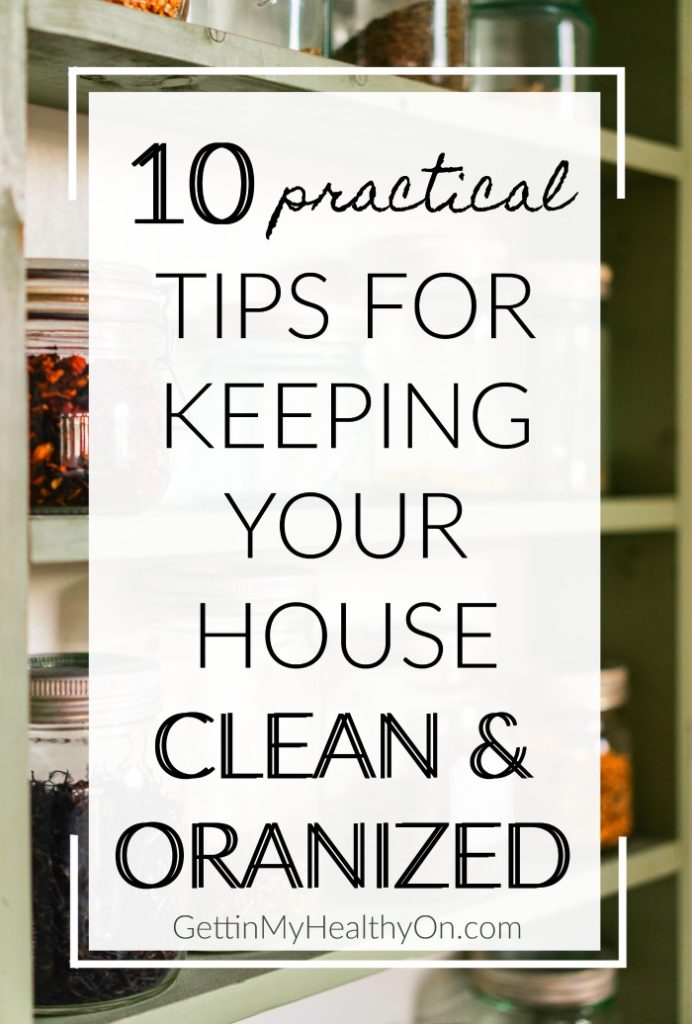This warmer weather is really making want to do some spring cleaning. Plus, the combination of April being National Stress Awareness Month and me recently watching Tidying Up with Marie Kondo, I felt inspired to write a post about organization.
I’ve always loved organizing (despite my room growing up always being a disaster…figure that one out). Weird thing you probably don’t know about me: I used to help my friends clean their closets when I was younger. And there was a period when I aspired to be a cleaning lady. Tidying a space just feels so rewarding, what can I say?!
To this day, I still love helping people organize. For example, my Christmas present to my brother in law (per his request) was an IOU to help him organize their basement, which he’s apparently cashing in this summer. I’m actually looking forward to it, too, as messed up as that sounds.
Due to my love of organizing (and helping others organize), I wanted to talk a little bit about methods I’ve discovered that make getting (and staying) organized possible.
The Question of: What If I Need It Later?
Before I get into my list of tips, I want to address the thought we all probably have when when we go through old stuff: what if I need or want the things later? From shirts you never wear to other items you haven’t used in years, it can be hard to purge things. That said, I’ve found getting rid of things I don’t need anymore can do wonders for not only removing physical clutter, but clearing a cluttered mind. It just feels great to not be buried in stuff.
In my opinion, being overwhelmed with clutter can completely negate the benefits of having it later when you might need it (but probably won’t). I used to be a “pack rat,” not wanting to get rid of anything ever. Over the years, though, I’ve learned to donate or throw out items that aren’t serving any purpose anymore. Sometimes it takes some time for you to stop feeling as attached to some things, but eventually, it really does get easier.

If you struggle with staying organized, take a look at some of the methods I use to keep things tidy and not let clutter take over.
1. Create a home for every item you have.
When there’s a designated spot for everything, it’s easier to put it all away instead of leaving it out. Even the things that don’t have an obvious place to be, make sure you create a place for it to go. And if you use the item a lot, make sure its home is convenient, because wishful thinking only goes so far. I included this first tip in my 10 Ways to Make Your House Feel Like a Home post awhile ago, too, because having things put away makes the space feel a lot more homey and less disheveled.
2. Use boxes to organize and compartmentalize similar objects.
When I saw Marie Kondo bringing shoe boxes and other small boxes to her clients’ houses, I felt pretty proud of myself, because that’s how I’ve organized our home for years. If I could go on a shopping spree to The Container Store, I would be in heaven, but specially designed bins can get pricey. I’ve always turned cardboard boxes into storage tools, like in closets or cabinets. (Cut them and tape them back up if you need to.) They make a huge difference for keeping similar items together.
3. Go through piles of clutter routinely.
I’m talking clothes and papers, especially. Even if you know they’re going to just pile back up, it’s vital that you take care of them regularly. Otherwise, you wake up one day with a mountain of bills and magazines on the counter that takes a lot of time and energy to go through, which makes you want to avoid it for as long as possible.
My biggest problem is letting a pile of clothes build near my closet. But I’ve found spending 5 minutes to put things away once or twice per week keeps the mess under control.
4. Put items you don’t use or need often in the less accessible spaces.
Short person speaking. Some shelves or cabinets require climbing for me, so I make sure the items I don’t use much are stashed away up there (e.g., holiday dishes, extra water bottles, duplicate dishes, etc.). If the “home” for an item you use regularly is inconvenient, you’ll be less prone to actually putting it away. So use the difficult-to-reach space in a practical way.
5. Think about how much space seems reasonable for a certain type of object.
For example, after our recent move, my clothes barely fit in my new closet, yet they fit just fine in our last one. After realizing that the new closet offers me a reasonable amount of space, I decided this was the perfect opportunity to finally get rid of items I never wear—especially since they’re making the clothes I do wear not fit in the space. So it just made sense to finally purge.
Another problem area for people? Spatulas. It’s so easy to keep acquiring cooking tools, but at a certain point, the drawer or crock you’re using to store them is overflowing. Make sure you have the basics of what you need, and don’t let it take over. (Pro tip, if you use a crock like we do, look for spoons/tools with skinny handles, not thick rubber.)
6. Set some catch-all containers in high-traffic areas.
I’m talking bowls or dishes where you throw frequently used items, like your keys, chapstick, gum, etc. Some things just need a special “catch-all” spot to make them easy to grab and put back as needed. These items don’t always work well to create neat “homes” for anyways. So embracing that they’re a random loose object makes them easier to keep track of.
7. Find a balance between decorations that are also functional.
I’ve always liked the idea of decorating our home using items that are also functional. That way you don’t acquire as much “stuff” and your decor does double duty serving a real purpose. While I love beautifully styled bookshelves and side tables, I also need to use those surfaces for various items—not just tiny sculptures and randomness.
A lesson I’m still learning is don’t buy stuff just for the sake of having stuff. That’s how things accumulate and take over. While I want to fill our new apartment with nice-looking decor, I also want to slowly get things I actually care about. Not just buy stuff to have stuff.
8. Just because something was a gift, doesn’t mean you have to keep it forever.
Some people might disagree with me on this one, and that’s fine—to each his own. But learning how to purge old gifts I don’t want anymore (and not letting guilt prevent action) has helped me so much. For example, I keep cards for a couple months after the event, then I usually toss them (unless they’re especially meaningful). For other items, like trinkets, I like to keep for a few years (even if they’re not displayed) because I’m not about to just…get rid of a gift someone chose for me.
At a certain point, though, you’ve got to prioritize what stuff you keep. I’ve found that after storing gifts I don’t want for an extended period of time, I feel more comfortable with donating them, because I feel like I’ve allowed enough time to change my mind…and it never did.
9. Empty out an entire space to thoroughly organize it.
This is why moving is such an effective way to purge unwanted or unused items. You see all of your stuff and realize how unnecessary so much of it might be. (Plus, purging things is a great way to make moving easier.) Although I’m not about to put all of my clothes on the bed to see what sparks joy, I do tend to clear out entire cabinets to re-organize them when they’re excessively full. Or when I organize my closet, I don’t mean to but always end up emptying out major parts of it so I can put things back in a more organized way. The mess gets worse before it gets better, but that also helps inspire the change you need.
10. Deep clean a room every couple years.
Or more, if you’re into it. I have this fear of becoming a hoarder, being one of those people who can’t use their garage for their car because that’s become the go-to storage space for so many other things. While I know this “deep cleaning” process can get 10x harder when you’ve lived in a house for decades, or you’ve been busy raising children, try deep cleaning various rooms once in a great while if you’re not great at regularly purging things. This makes it possible to keep the amount of things you have under control. Or to at least make sure it’s all organized and things aren’t being pushed to Narnia in the back of that wardrobe.
Bonus: Embrace the mess to inspire action.
Now I’m going to go the completely other way with a bonus tip. Sometimes I think keeping things out where they don’t belong can be beneficial—though this is mostly if clutter bothers you. If you don’t care about messes most of the time, leaving a mess out probably won’t motivate you to clean. But when something needs to be dealt with or put away, I put it in a high-traffic area because it bothers me, which means I’ll think about it regularly until it’s taken care of.
I did this with our tax documents recently, so I wouldn’t keep putting tax prep off. I also do this regularly with emails I need to respond to. (I’m one of those crazies who needs all emails read and as little left in my inbox as possible.)
What are some ways you keep your house organized?
Anyone else watch Tidying Up with Marie Kondo and feel inspired?




